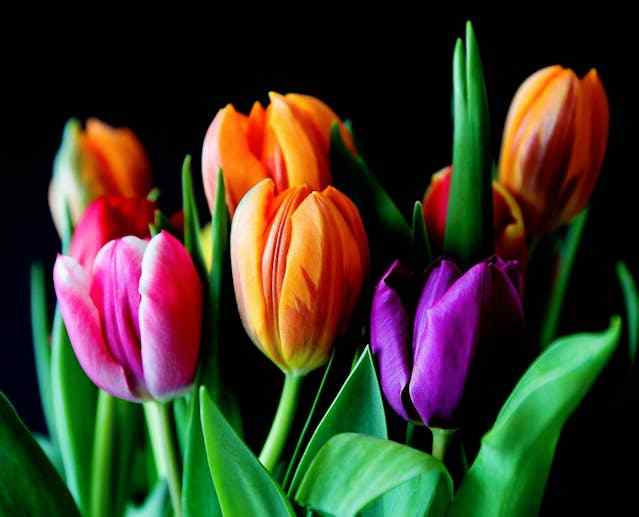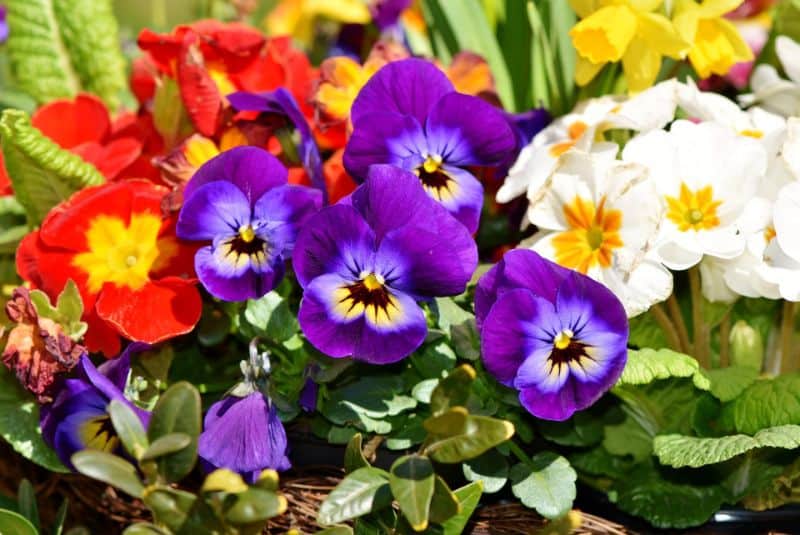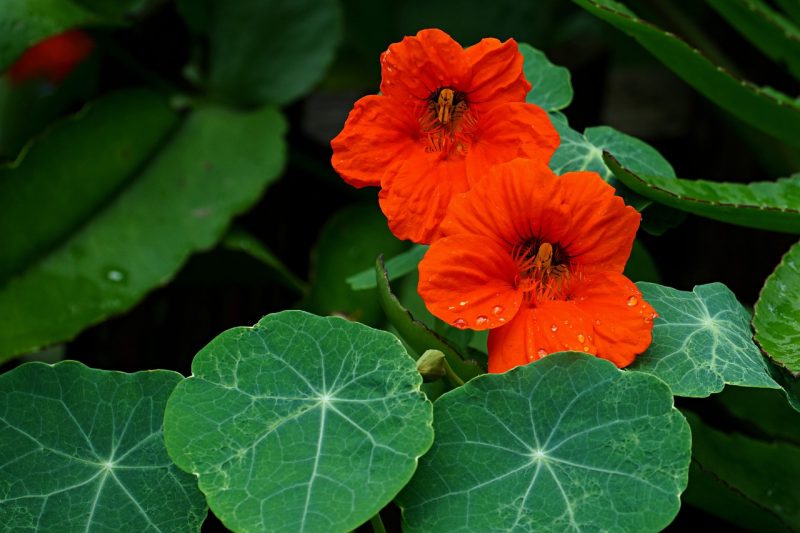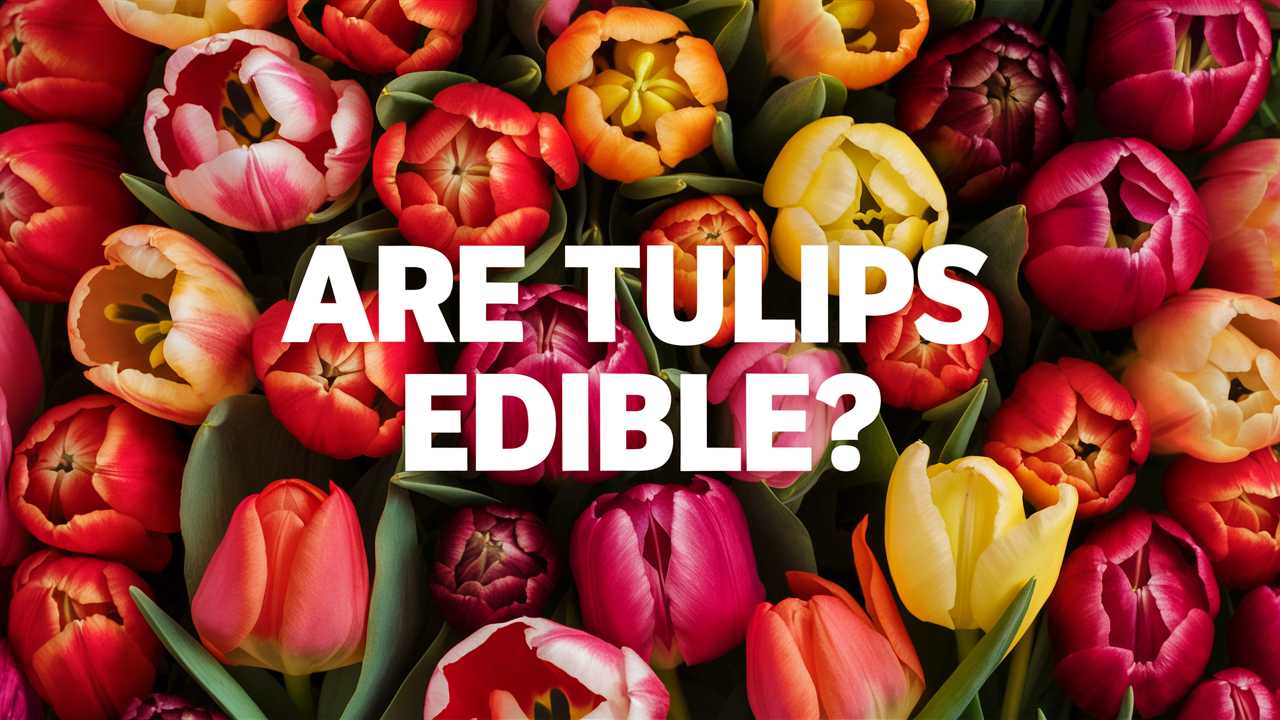In this in-depth blog post, we’ll explore the edible status of tulips, delving into their properties, potential health risks, culinary uses, and alternative edible flowers, all while fostering a greater appreciation for these stunning blooms.
The Chemical Composition of Tulips

At the heart of our inquiry into the edibility of tulips lies their chemical composition. While many flowers are fit for human consumption—edible flowers like nasturtiums, marigolds, and violets—tulips contain specific compounds that raise health concerns.
Alkaloids and Glycosides
Tulips contain alkaloids and glycosides, compounds that can be toxic when ingested in substantial quantities. The particular alkaloid found in tulips is a type of glycoside known as tulipalin; it exists in both the bulb and the flower petals. These compounds can cause various reactions in humans and pets, and their levels vary among different tulip species.
Symptoms of Tulip Toxicity
So, what happens if you consume tulip bulbs or petals? While one or two petals may not lead to severe consequences, ingesting larger amounts can lead to significant discomfort and health risks. Symptoms of tulip toxicity can include:
Gastrointestinal Distress: Consuming tulip parts can lead to nausea, vomiting, and diarrhea. The irritating properties of tulipalin are likely culprits for these symptoms.
Allergic Reactions: Some individuals may have allergies to tulips, resulting in rashes, hives, or more severe allergic reactions upon contact with the plant or ingestion.
Respiratory Issues: Ingesting or handling tulips may cause breathing difficulties in sensitive individuals due to anaphylactic reactions.
It’s important to recognize that while tulip petals may appear benign, the potential for adverse health effects makes them decidedly inedible compared to other floral options.
Tulip Bulbs: Not for the Dining Table

When considering the edibility of tulips, a significant factor is the bulb. Much like many flowering plants, the bulb of a tulip is nutrient-dense and serves as a storage organ for the plant. However, these bulbs hold concentrated toxic compounds, making them far from a candidate for culinary pursuits.
The Risks of Consuming Tulip Bulbs
The bulbs are primarily where tulips accumulate their toxins. Consuming tulip bulbs can:
Lead to Serious Gastrointestinal Disorders: The gastrointestinal tract is particularly sensitive, and the ingestion of tulip bulbs can lead to more severe vomiting, cramping, and serious intestinal discomfort.
Potentially Induce Toxic Reactions: In extreme cases, ingesting large quantities of tulip bulbs has the potential to induce toxic reactions that could require medical intervention.
A quick glance at the history of tulip bulbs confirms this risk; during food shortages in World War II, individuals resorted to consuming tulip bulbs out of desperation, only to suffer severe consequences.
Culinary Uses: Celebrating Edible Flowers

Recognizing tulips as toxic does not imply that flowers have no place in culinary creations. Instead of focusing on tulips, there is a wide range of safe and delicious edible flowers to explore. Below are some noteworthy alternatives that provide both flavor and visual appeal to dishes without the associated risks.
Must-Try Edible Flowers

Nasturtiums: With a peppery flavor that adds zest to salads and dishes, nasturtiums are not only edible but also a beautiful addition to any garden or culinary creation.
Violets: These fragrant flowers can be used in salads, candied as a dessert topping, or infused into syrups for drinks, making them versatile and delicious.
Calendula: Often referred to as pot marigold, calendula petals are edible and can add bright colors to salads and soups. They offer a flavor similar to saffron.
Bee Balm: This aromatic flower can be used in teas or as garnish, offering hints of mint and oregano.
Hibiscus: Known for its vibrant color and tart flavor, hibiscus makes a refreshing tea and can also be used as an ingredient in desserts and cocktails.
By opting for these safe alternatives, one can enjoy the wonderful world of culinary flowers without the risks associated with tulips.
Alluring Yet Dangerous: Summary of Tulip Toxicity
In conclusion, while tulips might look enticing, it is essential to acknowledge their toxic properties. From their alkaloids and glycosides to the gastrointestinal distress they can cause, tulips should not be regarded as a culinary item. Their bulbs, in particular, represent a significant health risk and should be treated with caution.
As we bask in the beauty of tulips this spring, it’s vital to appreciate them for what they are—an emblem of beauty and renewal—while being prudent enough to avoid consumption. Allow the captivating colors and forms of tulips to inspire joyful experiences that do not involve the perils of their potential toxicity.





